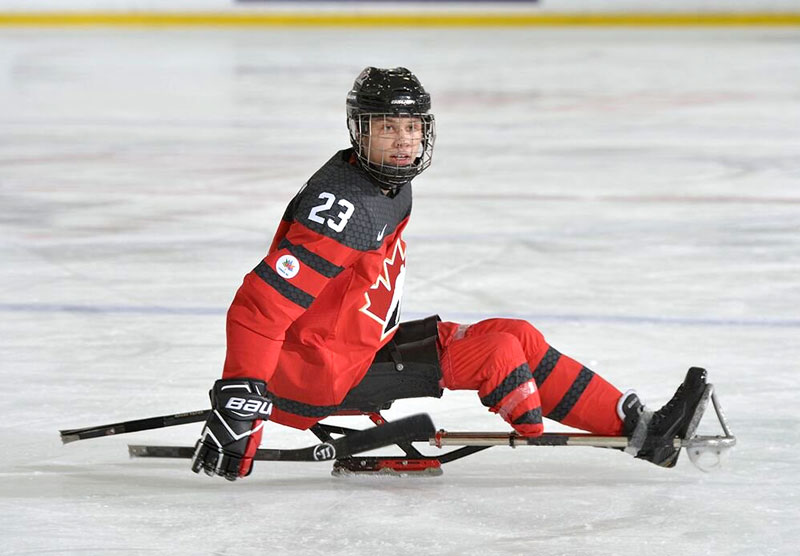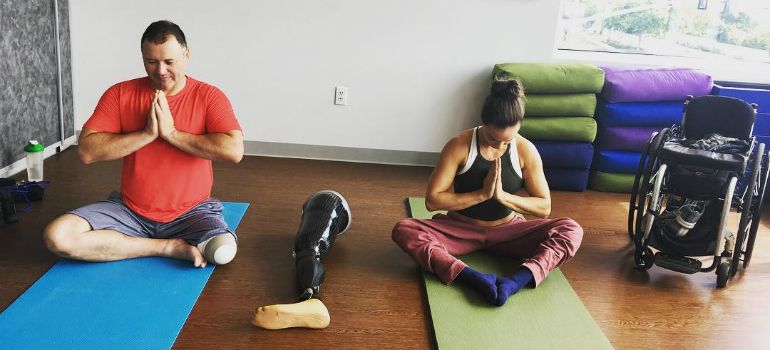Share:
Take it offline!
This Education in Motion resource is also available as a printable PDF.
Download PDF
Recovery after an amputation is a complex process that confronts patients with sadness, anger and frustration. This is why friends and family must know how to help recently amputated people adjust to their new life.
What is an amputation?
An amputation is the cutting of a bone with healthy tissue or the cutting of a part of the body at a joint (disarticulation). The amputation of a leg or any other limb is necessary when the damaged body region will not heal or may put the health or life of the patient at risk.
Loss of a limb can be the result of accidents, circulation problems, cancer, or birth defects. In cases of prolonged illness, the amputee knows in advance the need to carry out this operation but, when its origin is an accident, the amputation is unexpected and can cause a strong impact on the patient.
What is amputation level and why is it important?
The amputation level describes the "site" where the bone and tissue will be cut. This level is determined by the need for the intervention. When surgery is planned, this level is usually consulted with an orthopedic technician in order to determine the most favorable option for the patient to use a prosthesis in the future.
What to do after an amputation?
Once the operation has been performed, and once the arm, hand or leg is amputated, it is necessary to pay special attention to the healing of the amputation stump or residual stump. The care of the stump in amputees is very important both to heal the wound and to prepare that part of the body for the use of a prosthesis. For this, it is necessary that the stump does not generate pain, that it can bear weight and that it has mobility in all directions.
It is especially important, in the case of having a leg amputated, that the patient reposition themselves several times a day to avoid the formation of pressure ulcers. In this case, the wound may need more time to heal and intensive care such as compression therapy or creams will be necessary for the scar tissue to acquire resistance.

How is the rehabilitation process of an amputation?
The goal of rehabilitation of lower limb amputees (also in hand amputation) is to give patients the greatest mobility and independence.
Rehabilitation involves performing movements and learning to use prosthetics. Learning some special hygiene practices is also important, as the care of the stump in amputees must be constant to keep the scar healthy and prevent the skin from becoming rough and scaly. It is ideal to clean the stump several times a day and dry it properly.
People with an amputated leg should also take special care of their good leg, as it will support almost the entire weight of the body during much of the rehabilitation. It is advisable to use a comfortable shoe (with insoles if necessary), breathable socks and to treat any wounds that appear in the area.
Learning to walk with the prosthesis is another challenge in the rehabilitation of lower limb amputees. In fact, selecting the prosthetic components and knowing how to use them is key for the patient to regain their autonomy.
What are the psychological effects of an amputation?
The psychological impact of amputation can be very significant. Regardless of the reason for the intervention, all patients must undergo a process in which they will experience, with greater or lesser intensity, these phases are:
- Denial. This is more common in people who undergo an unexpected amputation. These patients are also more at risk of developing post-traumatic stress disorder (PTSD).
- Rage. Some people feel angry and blame others for their situation, which can lead to states of nervousness, stress, episodes of violence, etc.
- Depression. Sometimes depression can be a consequence of anger. This is probably the most difficult phase for amputees as well as the most common, although it can be treated and overcome with the help of medical professionals, family and friends.
- Acceptance. After a while and thanks to rehabilitation, the amputee will accept his new situation. In this phase it will be very important to have the support of people who have experienced this same situation to share experiences and advice to cope with the loss.

What is it like to live with an amputated leg?
Amputees should not be alone during the adaptation or transition process. This time can be prolonged and they will experience many changes, some of them drastic. This includes relearning many daily activities such as going to the bathroom, cooking or cleaning the house. In this sense, it is important that the whole family get involved in the modifications and adaptations of the home including installing bars in the bathroom, changing the bathtub for a shower or expanding the doors to accommodate the wheelchair.
For double amputee patients, we recommend the use of a wheelchair with a double amputee footrest system, since the center of gravity can be delayed, providing more stability. Wheelchairs can be adapted to the needs of each user by fixing the armrest to the frame, brake systems with ergonomic handles and resistant anchoring of footrest platforms. These characteristics are a good choice for patients with lower extremity amputation.
Another big challenge amputees face is not knowing exactly how long their recovery time will last. Returning to your job can also be difficult as you will have to adapt to your new physical and psychological conditions in a different environment.
According to some experts, especially in the case of planned amputations, it is important for patients to read and learn what their life will be like with an amputated arm or leg. Our recommendation is that they contact other amputees and with family members and associations to find out what to expect from this new stage of their life and that they choose those support elements that facilitate their recovery by making life easier for them.
If you found this article interesting, we invite you to subscribe to our newsletter where you can receive all our latest news and publications.